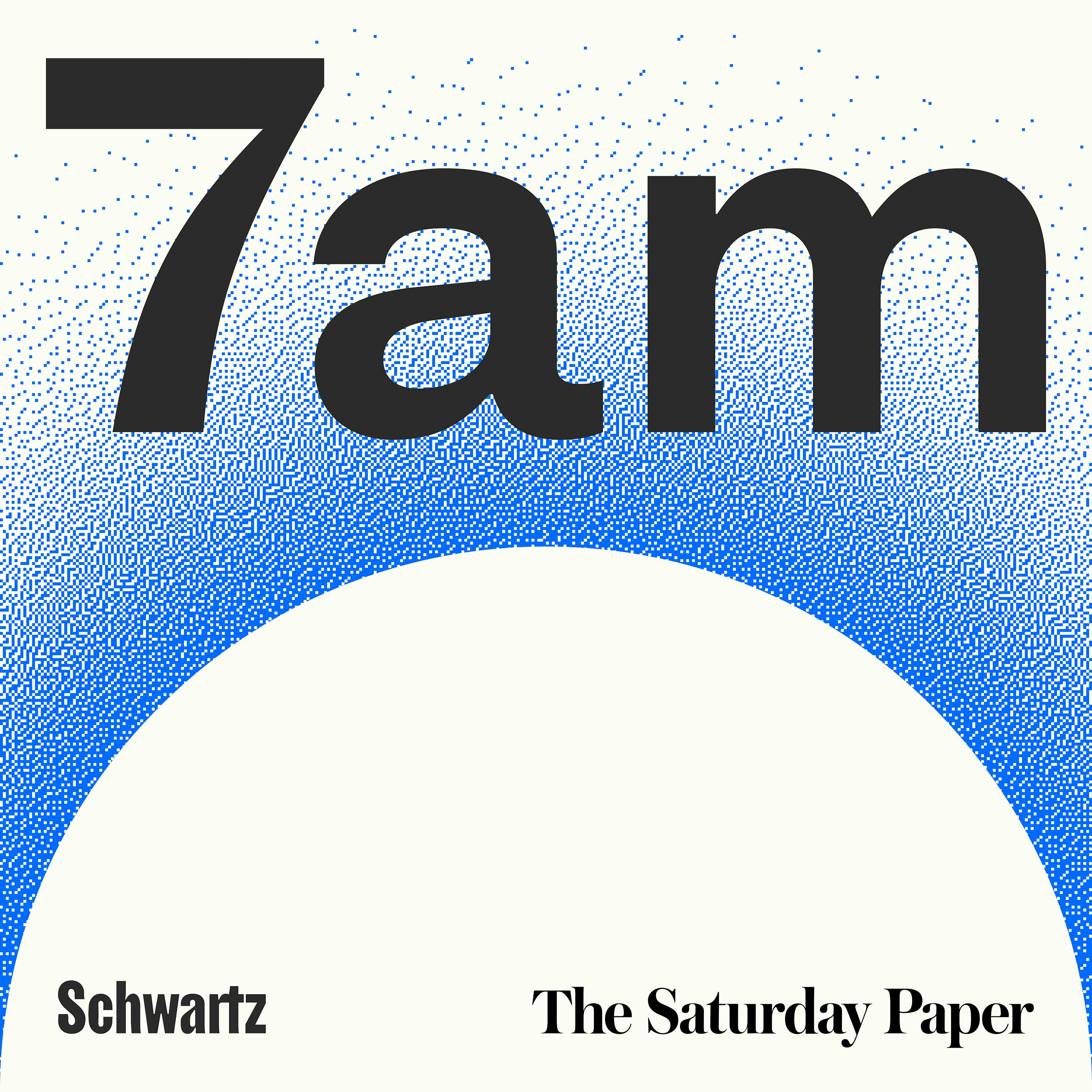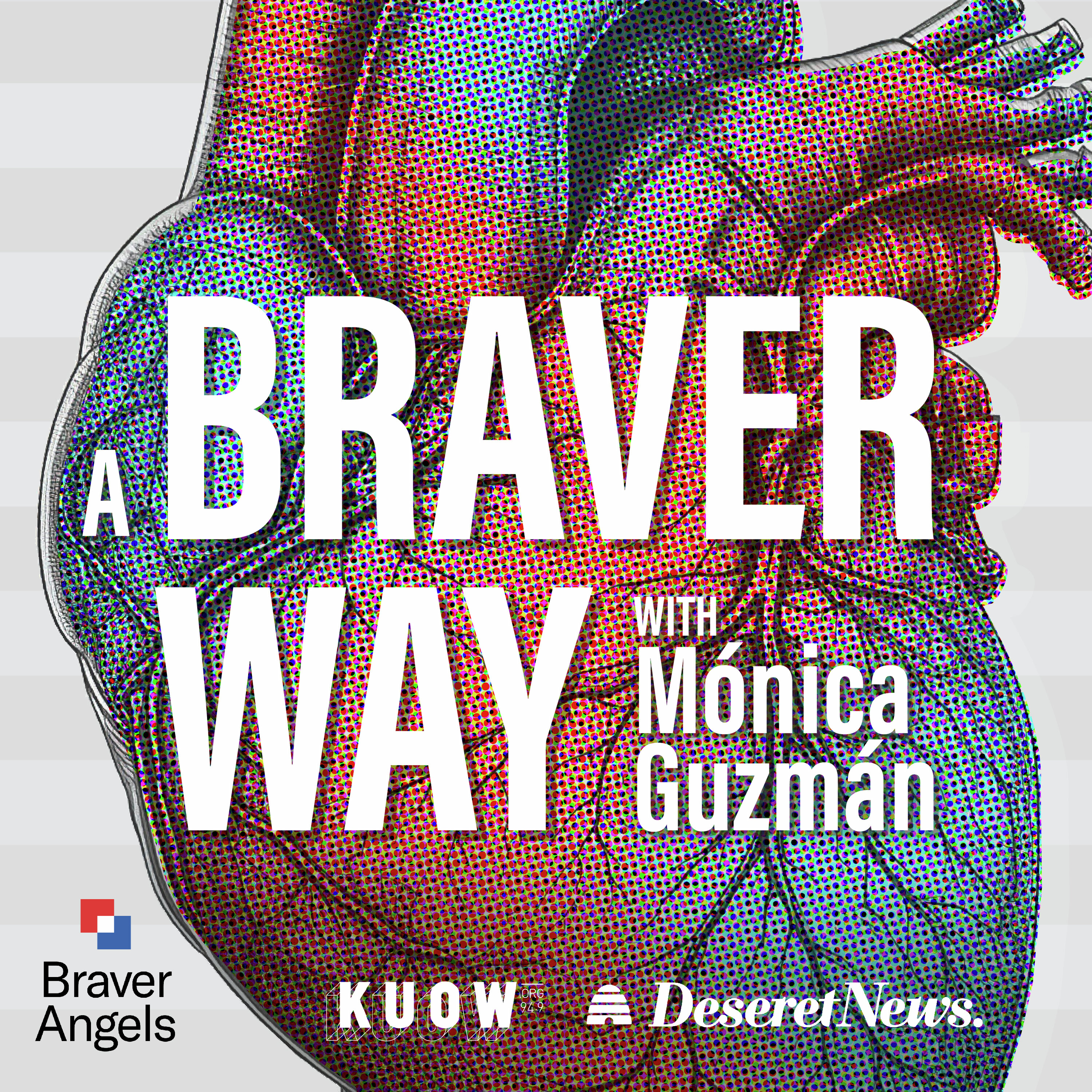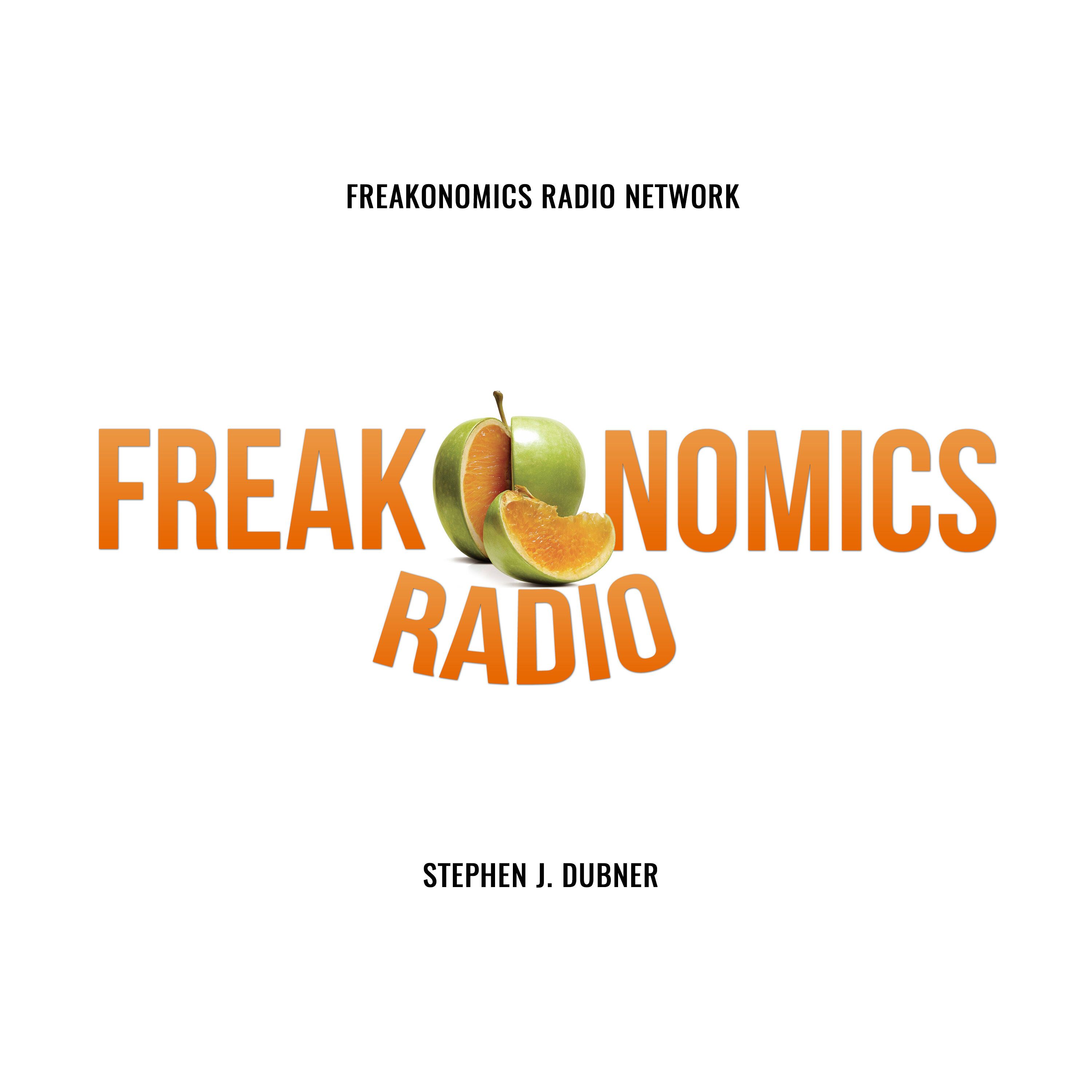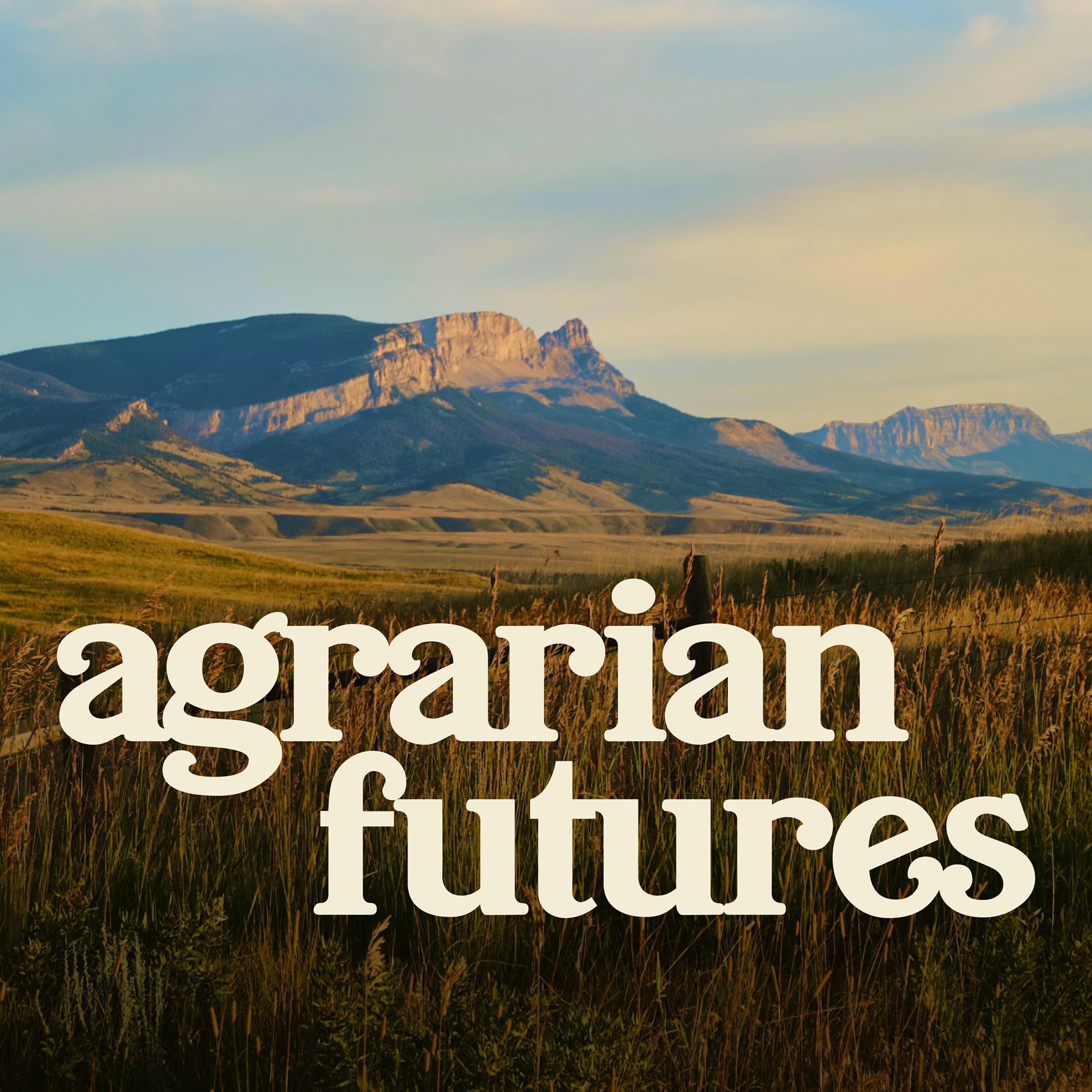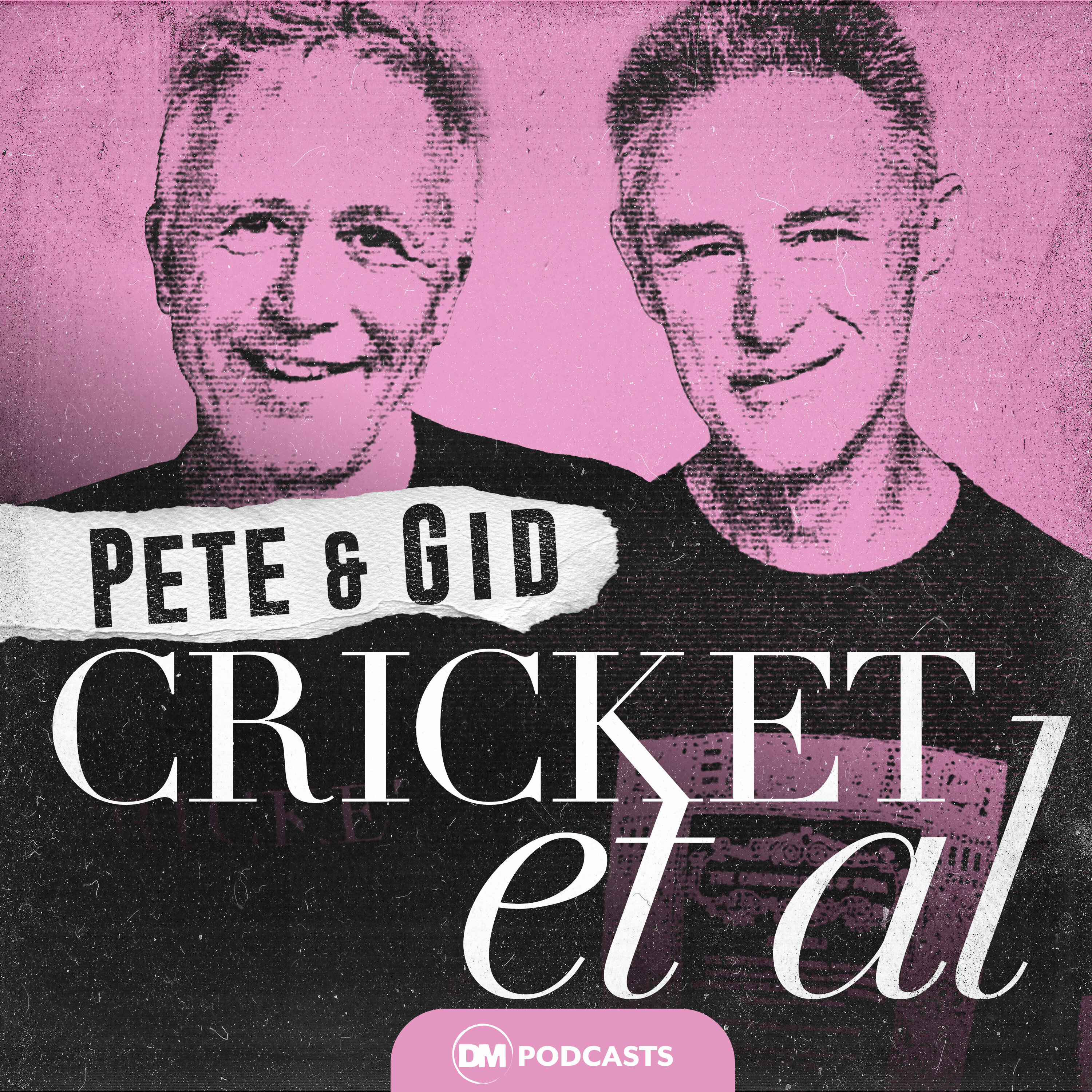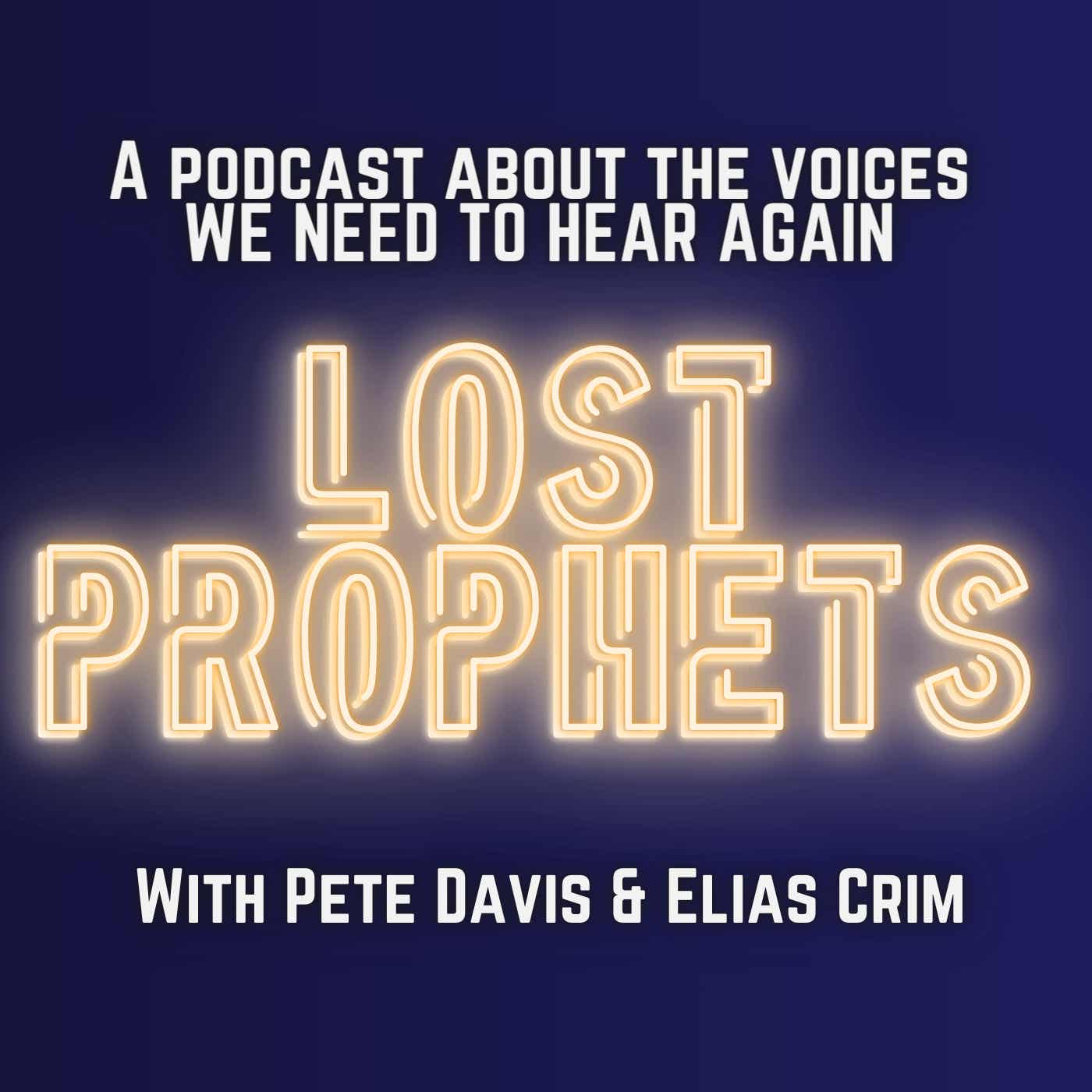
The RegenNarration Podcast
The RegenNarration podcast features the stories of a generation that is changing the story, enabling the regeneration of life on this planet. It’s ad-free, freely available and entirely listener-supported. You'll hear from high profile and grass-roots leaders from around Australia and the world, on how they're changing the stories we live by, and the systems we create in their mold. Along with often very personal tales of how they themselves are changing, in the places they call home. With award-winning host, Anthony James.
The RegenNarration Podcast
The Land Whisperer, Part 1: From the garden to the stone circle
Last week's episode featured a special on-location recording with the land whisperer, Patrick MacManaway. It has been played more than most in its first week, but given it was a little over two and a half hours in length, I also wanted to offer it in distinct parts, for those of you who prefer to listen to it that way.
Perhaps 40 minutes or so fits into your usual listening window better, or maybe that length will just give you time to digest the conversation. If you've already listened to the whole thing (thank you!), maybe this will make it easier to revisit certain parts. As always, feel free to let me know.
This is Part 1 then, from my intro through to when we head to the stone circle. We start in Patrick's garden, before jumping in the car. Roadworks sent us in all kinds of directions, so we got some time to talk about how this Scot ended up in Vermont, how he came to be doing what he's doing, and what that is exactly. There are some profound ancestral connections, including the growing legend around his father's healing hands on the battle field. And others that led to us meeting on this day.
For more behind the scenes, become a supporting listener below.
Music:
Hours, by Patrick Sebag (from Artlist).
Stones & Bones, by Owls of the Swamp.
The RegenNarration playlist (music chosen by my guests).
The RegenNarration podcast is independent, ad-free and freely available, thanks to the generous support of listeners like you. If you too value what you hear, please consider joining them.
BECOME A PAID SUBSCRIBER to connect with your host, other listeners and exclusive benefits, on:
- Patreon (NB: if you're using an iPhone, you can avoid Apple's new 30% app store charge for new subscribers by subscribing on your laptop or PC).
- The new Substack (for the same benefits as Patreon)
- Or Buzzsprout (without additional benefits).
Or DONATE:
- Directly via the website (avoiding fees).
- Via PayPal.
You can also:
- Visit The RegenNarration shop.
- Share, rate and review the podcast.
Thanks for your support!
So that's what I was doing was I was having a good hard think. However, what's clear from what happened then is the plants understood me. Even though it was an internal thought, they telepathically received the message. Secondly, they understood it and had capacity to change themselves, change themselves and, thirdly, they change themselves at my request, for our convenience, to support the people living in that landscape. And those three things put together. Frankly, first few times it happened to me, it was so mind-blowing I really pretty much went to bed for three days until the world reorganized itself.
AJ:You might remember a previous guest on this podcast by the name of Terry McCosker. Terry co-founded an organisation called RCS Australia some 35 years ago. Called RCS Australia some 35 years ago. Fellow Australian legend and also a guest and dear friend of this podcast is best-selling author of Call of the Reed Warbler, charles Massy. In that book he wrote when I look back over the rise of regenerative agriculture in Australia, I see at the forefront Terry and Pam McCosker and their RCS organisation. Today it remains a world leader in the field. In light of that, I titled the episode with Terry Behind the Greatest Regenerative Agriculture Movement in Australia.
AJ:Well, as I got to know Terry better over the years, I started to hear more and more about a bloke named Patrick MacManaway, who Terry had been working with since 2010. And Charles later shared with me his missing chapter from Reed Warbler, the one deemed a little too edgy to include at the time. Patrick features significantly in that chapter, along with some now famous stories of his father. So as the years went by, I became increasingly interested in learning about the man alongside the man behind the movement, all the more knowing that Patrick's extraordinary influence is far from limited to Australia. Born in Scotland to pioneering parents. When Patrick realised he shared his father's gifts, he also shared his medical training before his calling deepened and spread around the UK on to North America and beyond.
AJ:G'day Anthony James. Here for The RegenNarration, your independent, listener-supported portal into the regenerative era. With thanks to generous listeners like Mark kowald, dave godden and steven at urban green space. Thanks, men, for being paid subscribers for over three years now, making all this possible. If you're not yet part of this great community supporting listeners, I'd love you to join us. Get benefits if you like and help keep the show on the road. Just follow the links in the show notes. As always, with my enormous gratitude, I caught up with Patrick at his home near Burlington, vermont, in the fall last year. Yep, this unique episode called for some time sifting through the hours of material we gathered in one long sunny day together. We start in Patrick's garden journey to a couple of locations where Patrick has worked a farm to table restaurant that replaced McDonald's. Then we're full circle back to the garden for a few more of Patrick's most memorable stories and news of his next endeavour, recently launched with Terry McCosker, before he takes us out with a little tune. G'day Patrick.
AJ:AJ pleasure to meet you. Pleasure to meet you. Thanks for having us at your house. Thank you so much for making the journey here to northern Vermont and here we are, out back of your place. So I gather this is your block, but there's no sort of fences between neighbours and stuff around here.
Patrick:eh, the Americans have quite an open plan approach to their yards and gardens. I've found, I've noticed In.
AJ:Europe we make sure we've got fences around. Often Australia too, though Some are bringing them down deliberately. You know to just well not feel like you're imprisoning yourself as much as anything, as much as wildlife or anything else, there's always the matter of rabbits and groundhogs and vegetables.
Patrick:But no, we define the edge with trees and flowers, and where you stop mowing is about the edge of it, that's cool.
AJ:So we're looking at a little gathering circle around fire. I imagine you might use this a little.
Patrick:We do, either for family cookouts or, sometimes, gatherings with a more particular focus. There's a men's group that meets here every couple of weeks and likes to light a fire and then visiting dignitaries such as yourself being entertained Very good.
AJ:Yeah, is gardening. Do you manage to get very hands-on given your schedule?
Patrick:No and, as you can see, there's hours of weeding waiting to be done, so I'm hoping you guys are going to give me a hand pulling weeds later on this afternoon.
AJ:A 10-year-old doesn't mind getting put to work, thankfully.
Patrick:No, but it's just a pleasure. I travel too much to keep on top of it.
AJ:Has that been a dilemma for you? I'm curious in terms of how much you get to embody your accrued knowledge and wisdom over time versus taking, let's just say, a global approach and helping others. Has that been a tension for you? Have you sort of longed at times to be more grounded in your place, or this is well and truly your calling?
Patrick:Yes and yes, both AJ. I'm very much a homebody and I hate to leave wherever I am.
AJ:Is that?
Patrick:right, but circumstances of my work and profession have required me to go a lot where people are obviously working on places. I mean not entirely. I can and do do a lot of work long distance using maps and photographs, google Earth, and so forth now has revolutionized that Don't have to work off of paper maps anymore.
Patrick:So quite a lot of my clients in fact I can serve without a physical on-site visit. But historically and still by preference, a physical on-site visit but historically and still by preference, um, being in location, meeting the clients, seeing and feeling what the concerns are, is preferable. So yeah, it is a bit of a life on the road, um and but uh, I grew up in scotland and I visited vermont here in 1984 first, so in a way I'm always coming home when I travel.
Patrick:Either way Either way, and then Australia has just been such a pleasure since 2010, when Terry McCosker and RCS included my work in their programming. How did that encounter come about in their programming? How did that encounter come about? So I was brought in as one of their international speakers for their 2010 20th anniversary conference there you go.
AJ:So we were just talking about their 30th that, due to COVID, you missed and so we didn't meet there Right, but a pivotal moment then was their 20th for you.
Patrick:Their 20th was my introduction both to Australia and RCS, and Marg Bridgeford at the time was CEO and, with help from Peter Downey who was bringing resonant kinesiology into the RCS community, they tracked me down. At the time I was president of the British Society of Dowsers.
AJ:Because they'd been running courses along these lines. As I understand it, for about eight years prior, I think they'd been running the quantum agriculture umbrella stuff, the quantum started with me, did it Right, ok, under that branding.
Patrick:But I think they'd had presentations from different dowsers. Alana Moore is a very well-known and well-published practitioner of this stuff. She now lives in Europe. She's Australian by birth and she'd given presentations and they had a couple of other people also do that. And then they got very much into the human health based resonant kinesiology work and knew there was a bridge but wanted somebody to create a program of specifically the subtle energy inside of agricultural context was how I got my invite and subsequently they kept on bringing me back.
AJ:That's very interesting, considering your path, where the human health bridged out to the land. Let's come back to that. I'm almost sorry to leave this because I have felt a lovely vibe here, as, with the sounds, and notwithstanding the trains and the cars and other things, there's this beautiful little hum of life where we stand. But we've got a couple of destinations to hit up that are relevant to the story too. So shall we do it Lovely so I see your car of choice is an Equinox. Was that deliberate Destiny?
Patrick:Yeah, that was the last car. It got long in the tooth and expensive so I gave it to David and now it's waiting for more repair. This was Heather's dad's car. He went into a nursing home and this was in the family.
AJ:So you're picking up the story with your arrival in Vermont? What brought you to Vermont in the first place, those nearly 40,. Well, I guess yeah, 40 years ago 1984 was the first visit.
Patrick:So very simple, aj. The American Society of Dazzlers is based here in Vermont, is based here in Vermont and dowsing was a central practice in my family's work, mostly using it for Well, using it really for everything, from figuring out if the bread was ready to come out of the oven, or which was the best horse or car to buy, or routes or timing or planning. So dowsing was very central to the families, just life and process. But in a professional context they used it for diagnostic assessment and therapeutic protocols, because that had been in a centre for such things.
AJ:What was it called?
Patrick:again, your family practice yes, my parents set up the West Bank Healing and Teaching Centre in 1959 on a little farm in rural Scotland. At the time it was very unusual, because of the legacy of the witchcraft laws, to be practising mediumship, divination and spiritual healing outside of the ordained.
AJ:And it had been illegal then.
Patrick:It had been illegal under the witchcraft laws, and then that changed, I think in 1952. We got the Fraudulent Mediums Act, which finally allowed us to be mediumistic and intuitive as long as we weren't fraudulent, which seems like a very good and sensible piece of legislation, that's very interesting.
AJ:Our young fellow of course asked you what's witchcraft at the table just before when a bit of this came up. But I might run with the same question for people who only know in a sense the stereotypes or the legacy of that period.
Patrick:Yes, Well, I think the big picture is I think probably for 99.9% of our history, all around the world we've effectively been what we might call animist, effectively been what we might call animist, and there's been very much an awareness of the intelligence not only of our own ancestral community of spirit but also of the spirits of place, the genius loci for the Greeks, the particular quality of intelligence of rock and mountain and stream and soil, and whether we're looking at hunting-gathering communities or whether we're looking at agricultural communities, the communication with the governing intelligence of landscape has always been primary for survival. In Scotland back in the day, the Celtic kings of whom Macbeth was one those were really not so much positions of arbitrary executive authority. The kingship was elected typically by women and chosen from senior sages and druids, and their job was of an ambassadorial nature. So equinoxes, solstices, cross-quarter days, times of significant transition and change in the landscape, moving between spring and autumn, winter and so forth, whoever was on the job, the King of Scotland would have to go up to the central sacred mountain, shehalion, the hall of the Queen of the shee. The shee are the landscape intelligences. We would call them fairy, but they're not petite tinkerbell, they're sort of 45, 40 foot high, shining beings and a bit intimidating when you encounter them.
Patrick:No-transcript, but his job was to communicate with this overarching landscape intelligence and literally come down the mountain, sort of Moses-style, with a script of how many deer could be taken and how many fish could be taken and what the planting and harvesting dates would be. Because back in the day we didn't have google, we didn't have almanacs, we didn't have library, we really didn't have any written historical record, so your only source of information was anticipation and experience, and so they really did want to know what their grandparents and great-grandparents had done last time they had a flood like this or a frost like this or a plant illness like this, and so their only strategy was to communicate with tribal ancestors and the spirits of place, to follow in accord and guidance so that the wells would be full and the cattle would be fat and, as they say here in America, all the women would be strong and the men good-looking and the children above average.
AJ:You know you made the Moses allusion before.
Patrick:It is striking that these archetypes of mythology recur across cultures and when you think about relying on your ancestry for knowledge, the ways that's been left behind in some cultures my culture, our culture, maybe modern Western enlightenment culture that that's been left behind but that it was a universal experience and remains well yeah, in our ancestry, if not in our DNA, it is and because of being raised in a space where that was ordinary, my sort of go-to support team includes Companion Angels and Mum and Dad variously, and also a number of other friends and colleagues, as well as Genetic Linear Ancestry, genetic linear ancestry who are available to help and help out in all manner of what we would consider miraculous ways because they're for us non-linear, non-logical. But to not be including your friends in high places on your power team is seriously missing a trick.
AJ:That, I think, is dawning on many more of us. It might be worth saying even we're in the car, so we're passing a university I'm told it's a university town and we're passing.
Patrick:City University. This is it. This is the University of Vermont. Very gracious and elegant buildings here at the top of the hill.
AJ:Yeah, and awash with activity, because it may even be the first day of semester.
Patrick:Very close to it. I think they went back on a couple of days ago. Okay, yes, so we're full of eager and well-intentioned young learners here.
AJ:You get a glimpse of the hope of youth darting about the Knowledge Centre as we have it. And yeah, on a lovely sunny day and, yeah, a bit of traffic, we're stuck in, but it gives us time to talk. So maybe it's a good juncture to follow that thread through some ancestry and go back a little further and how. This was how this did become a normal part of your life. Where did it start?
Patrick:in your family, In my family. I can't quite trace it back, AJ. What I know is my Irish grandmother was deeply into it, but at this point both my parents as well as grandparents, have passed.
Patrick:So I now would really like to sit down and have a good old chat and find where did that come from in her life? Was it an unbroken tradition running in a female lineage, or was she particularly gifted or curious as an result? But certainly she was part of what's now the White Eagle Lodge, which is a society of spiritual enlightenment and healing that still continues to this day and formed in the early part of the 1900s around a medium called Grace Cook, and she apparently had connection with a Native American old soul who went by the name of White Eagle, hence the White Eagle Lodge. And there was a huge amount of spiritualism being practiced in the late 1800s and early 1900s illegal technically in Britain under witchcraft laws, but very open here in the US. Illegal technically in Britain under witchcraft laws, but very open here in the US, with a lot of summer camps for spiritualists. And that was a thing you went and did you know for your summer holiday was camp by a lake with a bunch of other spiritualists and talked to all your friends and family in spirit.
Patrick:So in my family was it was just a given, and my father went off as a 19-year-old with the British Expeditionary Force at the beginning of the war in Europe in 1939 and found himself fighting rearguard defence around the perimeter of Dunkirk while troops were evacuated from the beaches, and at that point he was spontaneously moved. While troops were evacuated from the beaches, and at that point he was spontaneously moved, put his hand on wounded comrades. They had no opportunity for medical supplies or medical evacuation, so he just put his hands on people and, to his amazement, was able to stop bleeding and give pain relief and indeed keep people alive. The main killer, I think, is battlefield shock from trauma and blood loss in those circumstances. So he was completely amazed that sure enough, just like it says on the box, we've all got a gift of healing and when circumstances arise to call it out, then it's there. But he was still surprised. I think it was amazing. He'd obviously grown up with those concepts, yes, but perhaps in a more sort of abstract and sort of sitting room conversation fashion, rather than in the raw heat of the moment when nothing else would would work and only that could serve.
Patrick:So he then cultivated for the next 20 years through training and apprenticeships with different psychics and healers, I think most notably a gentleman called Harry Edwards, who was preeminent spiritual healer in the first half of the psychic ability in a military circumstance. That was found very helpful in a number of situations during campaigns, I know, across North Africa. They had nightly seances amongst the officers to help them establish enemy troop positions and numbers in the absence of satellite or other aerial reconnaissance. He was involved in studies where they doused the noon position of naval warships at sea to check on the accuracy of that. There were studies of that, mm-hmm.
Patrick:Yeah, apparently they were absolutely dead accurate. You could find a designated warship at sea wherever it was and then quietly the use of dowsing to find and then subsequently disable landmines dowsing to find and then subsequently disable landmines and I know that those were things that he was personally involved in and I know the sort of extent of military uses of both dowsing and psychic practices are extensive, although often quite quietly done. Yeah, but use of remote viewing was big, I think for a while, and so he was in the army for 20 years. He was a military brat. His dad had been a career officer and he'd been all the way through military college from, I think, age 8, eight until 19.
AJ:So it was his life and his his milieu but conversely then not yours, because by then the center was up and running and I grew up with it.
Patrick:Yes, no, it was. It was um gurus for breakfast and lamas for lunch, because it was the first of its day. And so people came from Tibet and America and Scandinavia to visit and study and they ran conferences and workshops and took apprentices. We had up to eight full-time live-in apprentices for a while um, marvelous, as you can imagine.
AJ:Fascinating kitchen table chats so these are your very young years, then, that you recall like this that was my growing up.
Patrick:Yeah, as far as I knew that was normal.
AJ:Yeah, well, when did you recognise that you were indeed carrying this ability as well?
Patrick:I grew up fascinated by it and immersed in it and, frankly, very much hoped that I could do it too. As you would I can well imagine, and my plan was to join the family's business and we certainly learned skills and worked on each other and animals and so on, just growing up. But honestly, until one's really in a situation of applied need, then that's when you get to see whether the thing really works nicely or not.
AJ:When did that come for you?
Patrick:So I was encouraged to take a degree in medicine before going into the holistic therapies field, partly for training, partly for subsequent issues of licensing and insurance and so on. So I went through medical school and got my basic medical license and then at that point I took a year out to really focus on what part of the field was most interesting to me. And I was really fascinated by environmental health and working with places and the effects that those had on the people living there. And at the time the World Health Organization had released statistics declaring that 30% of our buildings were sick buildings, based on a criteria of 20% or more of the occupants having health or comfort problems arising directly from the location. And there's seven or eight things on that list, including air quality, light quality, sound quality. But studies from Germany in the 1920s and 70s done by Dowsers had shown a very strong correlation with human health, and something called geopathic stress arises when something natural to the site is stressful for health, the most classic of which is water running in underground streams or faults or fractures and fissures. And because water is the most electrically conductive material in the landscape over a strong underground stream, the Earth's natural geomagnetic field expresses itself in a slightly more exaggerated and sometimes aggressive way. But also it acts as a pathway for atmospheric electromagnetism going to ground. So for hundreds, probably thousands of years we'd known to avoid sleeping or building our houses or putting our animals close, confined in locations where underground water was there.
Patrick:A study in 1928 by a Bavarian dowser called Baron Gustav Freer von Pol. He dowsed for people, for wells, but in the process of walking the landscape to see where the water runs, he observed several things. He observed that mammals and birds avoided sleeping over them or nesting over them entirely, and you'd have birds' nests in an overhanging eave, one in each rafter, and then a gap where there was no nest, and then it would pick up again and the dowsing rods showed indeed that there was an underground stream just cutting under that location. So mammals avoided them, birds avoided them, but insects very attracted to them, and ants and bees and wasps would selectively and deliberately nest over them.
Patrick:So he observed this species preference and also observed the same in plants. Some plants were very adversely affected, especially fruit trees and vegetables that came to a head above ground, brussels sprouts, kohlrabi, things of that nature, whereas some of our medicinal plants really thrived. So this was a curiosity and he did a study in a town called Vilsberg, on a tributary of the Rhine. At the time had three and a half thousand people and he'd previously doused municipal wells for them and asked if he could do a health related study. So with various German burgers he went around the whole town and mapped out where all the water ran and specifically if and when it ran under people's houses and then especially if it ran under their beds they'd run under their beds.
Patrick:And then they compared that study with the available records of death by cancer, which went back to 1918. This was 28, so they had 10 years still of statistics and they found that every single one of 52 people who had been documented as dying of a cancerous illness had been sleeping over one of these underground streams. So that was a real awakener for me as somebody interested in health and particularly interested in being outdoors and the environmental aspects. I'd just say in terms of that study it was 1928, before we had all the carcinogens that we now have in our environment and diet, so it was possibly a study that would be hard to replicate now in terms of isolating causes, and we also don't know from the study how many people were sleeping over underground streams and didn't die from cancer. So it's not a complete medical study in that way, but a 100% association of if you want to die by cancer then you need to find yourself an environmentalgeopathic stress was certainly, in my mind, worth exploring and sat very beautifully in the space of natural health, dazzing and medicine. So it was a bit ideal for me.
Patrick:I wanna go down. I don't know if we're gonna be allowed to. Doesn't look, doesn't look very good. It blocked us. There we go.
Patrick:They blocked us there we go so, progressing that theme of human health in environmental context and starting to work with people whose health was being affected adversely by their homes, people whose health was being affected adversely by their homes. I got to build up quite a lot of experience with what sort of patterns fitted, what kind of illnesses and what the mix of influences were. So air, sound and light. So air, sound and light. But beyond that, then, the presence or absence of this physical geopathic stress was significant. But also, I found of huge significance the presence or absence of residual energies, of human thoughts and feelings, very colouring of the atmosphere, with or without the presence of earthbound spirits have been put onto a place with malevolent intention and then, as you get deeper into it, literally whether the spirit of place recognizes its current identity and use and the intentions of the people living there. Because if a place is fully appraised of what the people are up to, the natural inclination is, to the extent that it can, to support us, whether that's in growing the best field of carrots, or having the most delightful restaurant experience, or commercial, domestic, agricultural, once the elemental consciousness is clearly, is clear and without residual stresses and traumas, and then has clear communication as to what the people are up to, then you've really got a sort of working team, a marriage between people in place.
Patrick:Because our mind spans at least four octaves of consciousness. The so-called beta, alpha, theta and delta bands from 36 waves per second down to zero, and beta is our cognitive linear frequency set, and then below that, alpha is where plants and animals basically are having their communications, and then below that, theta is where the elemental realm has its, its cognitive consciousness. So we embrace all of those. Our Western mind has been trained into rational linear consciousness exclusively, and so we can miss out on all of the so, particularly for an elemental. They're aware of the presence of a human mind, but they can't read our mind if we're in beta. So it's like being a diver underwater looking up at the shadow of a boat on the surface. Is it a fishing boat? Is it a warship? Is it?
Patrick:kids out for a picnic? Don't know. We know that they're there, but unless they bridge into that elemental theta consciousness, they can't perceive our intention. And so what we look to do is identify, communicate with and create cooperative agreements, basically with those intelligences of place. And it's a slightly different conversation whether it's a farm or a shopping mall or somebody's home, but it's effectively the same conversation. It's it's just a conversation of communication and agreement, and we start by healing any hurts that are present in the landscape and then we get into communications and then, as required, we can optimize with sound or homeopathy or biodynamics or radionics, etc. Stone circles such as the one we're about to see, to really fine-tune like a musical instrument so that the harmonics of the space are optimum for its currently dedicated use and purpose.
AJ:Perfect segue. Let's go to the stone circle.


